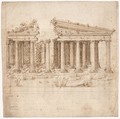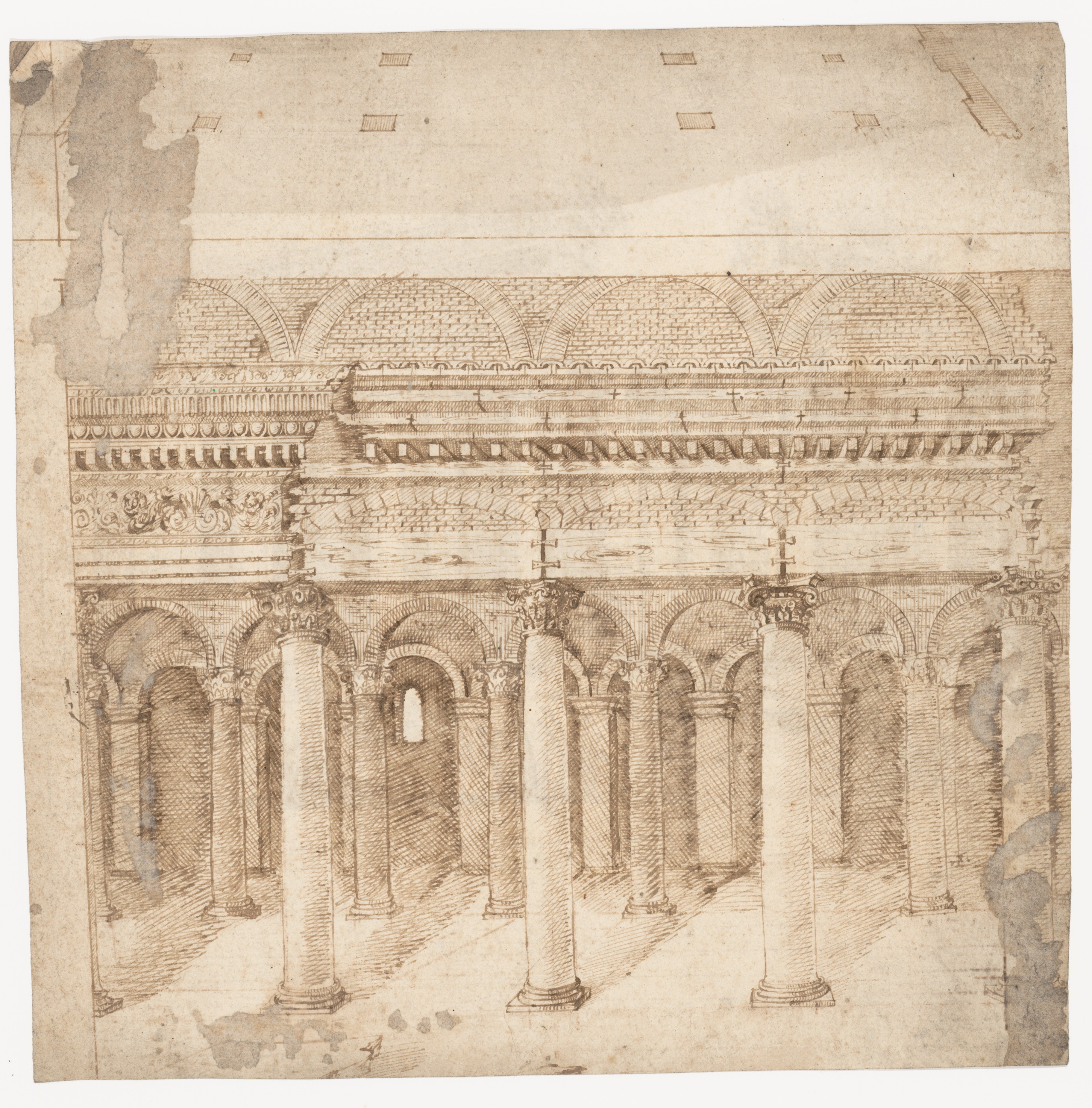Recto: Front Elevation of a Roman Temple in Ruins (inspired by Giuliano da Sangallo); Verso: Elevation of the Nave of a Roman Basilica in Ruins (? the Basilica Giulia, inspired by Giuliano da Sangallo).
Attributed to a member of the Sangallo family Italian
Original Treatise Written by Marcus Pollio Vitruvius Italian
Not on view
A recent discovery, this sheet and seven others (acc. nos. 2008.105.1-8) comprised a manuscript draft for an Italian edition of the sole surviving architectural treatise of Roman antiquity, Ten Books on Architecture by Marcus Pollius Vitruvius (late first century B.C.). Had the project been completed, it would have ranked among the brilliantly imaginative works of Renaissance interpretive architectural theory. The drawings also exhibit a beautifully expressive handling of the pen. Comparisons of style as well as of the shorthand notation in the sketching of human figures suggest a close kinship with drawings by Bastiano "Aristotile" da Sangallo (Florence, 1481 – Florence 1551) and the collaborators that helped him draw and write the motifs of marginalia in a printed 1486 edition of Vitruvius (Biblioteca Corsiniana, Accademia Nazionale dei Lincei, Rome) that was reworked in the 1530s. By all accounts a virtuoso stage set designer, Bastiano da Sangallo-the cousin and closest collaborator of Antonio da Sangallo "The Younger" and Giovanni Battista da Sangallo "Il Gobbo"-was Michelangelo's assistant in the Sistine Chapel and took the surname of "Aristotile" for his love of antiquity. Members of the Sangallo family had been deeply interested in Vitruvius for at least two generations.
This image cannot be enlarged, viewed at full screen, or downloaded.
This artwork is meant to be viewed from right to left. Scroll left to view more.




